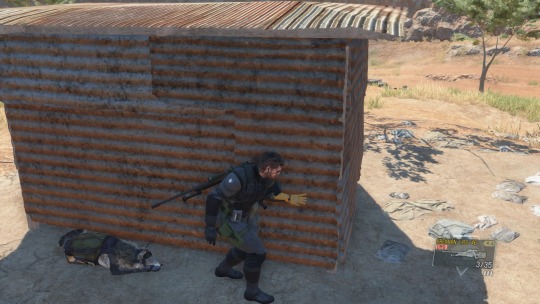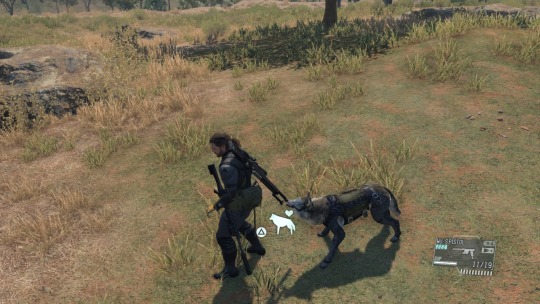#prone position
Text

226 notes
·
View notes
Text

2 notes
·
View notes
Text
The prone position is a patient positioning technique used to improve the patient's access to specific body areas. This position is often used in healthcare settings, such as surgery or Covid treatment.
A patient position is a specific way a patient should be positioned during a medical procedure. There are many reasons a patient might need to be placed in a certain way, such as to improve the doctor's access to a particular area or reduce the risk of complications.
Patient positioning also plays a vital role in comfort: patients positioned correctly are less likely to experience pain or discomfort during a procedure.
Countless medical procedures require specific positioning, and there are several categories of positions, such as the supine, prone, lateral, and Trendelenburg patient position.
This guide will discuss the prone position, when it is used, and provide tips for healthcare professionals on placing patients safely in it.
What is The Prone Position?
When a patient is in the prone patient position, they are flat on their stomach and lying with their backs facing up. The head is bent sideways, with minimal hip and neck flexion.
This position is frequently used in the medical field, particularly during procedures or operations requiring access to the back or spine. It is also possible to use it for various physical therapy exercises.
In general, the prone patient position is flexible and can offer various benefits for various objectives, including medical and non-medical ones.
A patient lying prone can have additional support by placing a small pillow under their head and another pillow under their legs.
When to Use the Prone Patient Positioning?
The prone patient position is frequently used when a patient's back or spine needs to be accessed for a medical operation or treatment.
Some specific examples of when the prone position might be used include:
● Surgery on the back
● Brain or brainstem surgeries
● Spinal surgeries
● Rectal or buttock surgeries
● Surgical procedures on the back of the arms or legs
● Physical therapy for back pain
● Massage therapy
Benefits and Risks of Prone Position
The prone position grants access to the dorsal region of the patient’s body, such as the shoulders, neck, and spine.
One benefit of the prone position is that it helps to improve respiratory function.
When an individual lies on their stomach, their lungs have more room to expand, which allows for better airflow.
The prone posture may help prevent the need for a ventilator in some cases. It can also boost the survival chances of individuals who have been placed on a respirator and are being withdrawn from it.
While the prone position has many benefits, it also comes with several risks. Some of the main dangers are increased abdominal pressure and increased bleeding.
Cardiovascular compromise can also occur, as the heart may not be able to pump blood effectively when in a prone position.
Additionally, abdominal compartment syndrome can occur, impairing not only visceral organs but also the cardiovascular and pulmonary systems; it may also cause a decrease in cerebral perfusion pressure.
Another risk associated with the prone position is venous air embolism, which occurs when gas bubbles enter the bloodstream and block blood flow.
Finally, ocular injuries can occur when a patient is positioned prone.
While these risks are serious, they can often be mitigated by taking precautions and using proper techniques when performing medical procedures in prone positions. The prone position can be used safely and effectively with careful planning and execution to improve patient outcomes.
The Prone Position During Surgery And its Complications
The prone positioning is a common position used by surgeons because when the patient is in the prone position, the dorsal surface of the body is more easily accessible.
The posterior cerebral fossa surgery, the buttock and perirectal procedures, the posterior spine surgery, and the operations on the lower extremities' rear components are standard procedures performed in the prone position. In addition, endoscopic retrograde cholangiopancreatography (ERCP) operations are typically carried out with the patient in a modified prone position.
As noted earlier, the prone position is associated with various complications. These complications are often caused by increased pressure on anterior structures.
Intraoperative pressure sores have a prevalence rate of between 5% and 66%, resulting in higher hospital stays and healthcare expenditures.
Loss of vision after surgery can be caused by significant orbital pressure, and this problem may result in permanent disability.
Abdominal ischemia and organ failure can occur when there is excessive pressure on vital abdominal structures, causing them to become ischemic and fail.
Pressure sores on the chest are linked to prolonged operations in the prone position. Large breasts are subjected to more direct pressure. Furthermore, patients with breast implants risk rupturing and developing breast necrosis due to the direct pressure applied when lying face down.
There are, however, some safety precautions that can be put n place to mitigate the risk associated with this position.
● Tape the patients' eyes before placing them prone.
● Patients with large breasts should have their breasts placed medially because lateral placement might be uncomfortable.
● Avoid excessive flexion, extension, or neck rotation that is unnecessary for enough surgical exposure.
● Properly position the head and neck and continuously check throughout the surgery to prevent spinal cord and brachial plexus nerve injuries.
The Prone Position for COVID19 Treatment
Although additional research needs to be done, medical professionals have discovered that the prone posture benefits patients suffering from severe COVID-19.
The patient's back lungs can fully expand when positioned in the prone position. It may also assist the individual in coughing up more of the fluid in their lungs and may enhance how oxygen is distributed throughout their body. This may generally result in improved breathing.
When patients are placed in prone position, they are subject to close observation. The patient will remain in the prone position for a predetermined time before the medical staff will move them back to the supine position for a few hours.
If the patient is experiencing an improvement in their breathing and can tolerate the treatment, the process may be repeated over several days. People have been able to avoid having to be intubated and placed on ventilators in the intensive care unit because of this in some cases.
Patients in the COVID-19 study treated with ventilators have also benefited from lying in the prone position. It has been demonstrated that increasing the time ventilated patients spend in the prone position can improve their chances of survival.
FAQ
Why Does the Prone Position Improve Oxygenation?
The prone position improves oxygenation mainly because it helps open up the alveoli in the lungs. When a person is lying on their back, the weight of their body can compress the alveoli and make it difficult for them to expand. This can lead to a decrease in oxygen levels in the blood. However, when a person is in the prone position, the alveoli can expand more fully, and this helps to increase oxygen levels in the blood.
What Is the Benefit of Putting a Patient Prone?
There are many benefits associated with placing a patient prone. Some of the most common advantages include improved oxygenation, enhanced breathing, and better drainage of secretions produced in diseased lungs.
Is Prone Position Good for COVID?
The prone position is often used in treating covid patients.
This is because it has been shown to improve patients' oxygenation compared to other positions. It is also shown that it can prevent lung injuries caused by mechanical ventilators.
What Is the Difference Between Supine and Prone?
The main difference between supine and prone is that supine is the position in which a person lies on their back with their face up, while prone is the position in which a person lies on their stomach with their face down.
Why Is the Prone Position Used for ARDS?
Doctors often use the prone position for ARDS because research indicates that it leads to better ventilation of the dorsal lung areas affected by the alveolar failure, improvement in ventilation/perfusion matching, and a reduction in mortality rate.
Conclusion
The prone position is one that medical practitioners often use because it has many benefits for patients suffering from respiratory problems. It can improve oxygenation, help to clear secretions from the lungs and prevent injuries caused by mechanical ventilators. While more research needs to be done on the long-term effects of this treatment, it is a promising option for patients with severe respiratory problems.
Although considerable risks are involved with the position, taking adequate precautions and using enough supportive devices can be well-managed.
0 notes
Text

Kinda a redraw of this piece requested by @puppycillz like embarrassingly a LONG time ago (2022 🫣🙈), I never forgot and it's always haunted me!!! It's just a very hard pose to pull off with that many bodies. 😭😭😭😭😭
Bit of a fantastical stretch of a scenario and bed lmao. 😂
BUT!!!!!!!!!!!!!!! it at least goes with the funny idea that Chakotay gives up his fleet commander's quarters on Voyager to the Paris family lol.
#ed being prone to end up in the weirdest positions while sleeping lmao#ALWAYS KICKS KATHRYN#My Art#Star Trek: Voyager#First Splinter Timeline#Chakotay#Liam Janeway#Edward Janeway#Amelia Janeway#Philippa Janeway#Kathryn Janeway#Threshold#AU
91 notes
·
View notes
Text
Like this post if you have acne
83 notes
·
View notes
Note
Eiden was fully stuffed like the snake toy in R5. We finally got stomach bulging. I knew big boy Yakumo could do it.
wait what?! is. was? tHAT the "thing" for R5? i .. i was n't even looking there i have to go back and check!!!!!!!
#me entering every intimacy room: *opens up mental document* ok which kink is this room gonna main#also me: i wonder if the devs have to make sure certain chars don't repeat the same positions too close together#like tracking patterns in my handy lil notebook.#against the wall. on the floor. on a bed. free standing! on the floor (sideways). against the wall again (cave) 😅#ok let's take another look at r5... hmm..... investigatibve goggles ON!! *STARES UNBLINKING AT EIDEN'S ABDOMEN*#OH!! THERE IT IS!! the bulging!!! aha!!#as u can see i seem to not have that kink... at the moment. otherwise i would have noticed the first time 😅#i've FAILED YOU YOUR HONOURABLE HORNYNESS ANON orz#on my first watch of R5 i tented my fingers and went... prone?bonery? is that the main kink? wait no. that's a position#(whispering among my own voices) can a position be a kink? why not? why yes?#asks#yakumo
20 notes
·
View notes
Text


Q: Who did Vaklorvek murder? Also do T'Rahni'hk and Kirinnin have a good relationship?
A: Vaklorvek was a passenger on a transport ship which was caught up in some typical star trek alien bullshit because a Starfleet ship was involved in helping it through what seemed to be engine trouble. A powerful entity soon destroyed the transport ship, killed most of the passengers and he was part of the few that were alive (Moved along with a few others to the Starfleet vessel for safety).
The entity informed them all that it would stop and leave the rest alive if they chose one person to sacrifice. No one on board was willing to sacrifice anyone or be sacrificed. They would all stick together until the bitter end to find a way to defeat this thing! While this was happening Vaklorvek tricked one of the crewmen onto an escape pod which he then trapped them in. He'd programmed it to leave the ship then encrypted it so the crewman couldn't escape in time. The entity 'ate' the pod and the crewman inside it and, satisfied, left the rest of them alive as promised.
Vaklorvek didn't hide what he'd done and once they reached Federation space he was immediately placed under arrest. To this day he expresses no remorse for his actions and T'Rahni'hk is unsure how exactly to interact with him as he's stated before that he did what he did to ensure that she lived.
T'Rahni'hk and Kirinnin get along very well! Kiri holds his sister in very high regard, thinking she's very intelligent - if only she would stand up for herself. T'Rahni'hk meanwhile finds her brother a bit unruly and difficult to understand but she tries her best to remain close with him and is relieved that he seems to be responding well to her efforts. He's very brash in contrast to her so she can get overwhelmed or roped into what he wants to do very easily. Her mother often scolds her for letting him get away with too much and sneaking him candy. He doesn't need candy!
The only thing she really chastises him for is speaking too emotionally and being rude to others. (He's still learning how to fully control his emotions). When she's home he makes her play one million games with him.
#THANK YOU <3 for your interest and the compliment~!!!!#Q&A#T'Rahni'hk#beas ocs#everyone feel free to ask oc questions I looove them <3#Kirinnin says 'my sister is one of the most illogical specimens Vulcan has to offer' and if you agree he gets into shin kicking position#bee doodles#Vulcan children are more prone to emotional behavior in my mind. Vacillate between being very upright and logical and then begging for#dessert please please please NO finishing my vegetables ONLY having dessert
26 notes
·
View notes
Text
zoro’s favorite position is standing full nelson
#he loves to show off his strength :-)#and i love to let him use me like a ragdoll :-)#yes prone bone is great but he wants you completely at his mercy. he wants to fuck you in a position that few can :’-) i love him i will die
13 notes
·
View notes
Text

134 notes
·
View notes
Text
So I’ve been seeing a lot of posts addressing fatphobia, which is great, but some of them take a turn into shaming anyone with insecurities about their weight and basically telling them to get over it, which really isn’t helpful. Also, while I can totally understand not wanting ed blogs interacting with you, I feel like this site has started to moralize eating disorders without fully understanding why they occur. And just like it can be harmful to moralize addiction and other mental illnesses, I think it’s ultimately a bad idea to start moralizing eating disorders (i.e., treating people who have them like they can just choose to get over them), especially when you take into account that certain cultures or upbringings (such as abusive upbringings) can influence how you look at your body. It just seems like a lot of modern-day body positivity activism has lost a lot of empathy for other people and ignores the nuance of an individual's situation. Addressing your own body insecurities can be an incredibly personal and difficult thing, especially in a society that profits off of them, and if we keep ignoring the root problems of how they occur in the first place, I don’t think we’re ever going to fix them within our society.
#I could also go on a whole other rant#about how white non Jewish people often center themselves when it comes to body hair positivity activism#and completely ignore the racist antisemitic and xenophobic roots of body hair removal#and have started shaming people who remove their body hair#despite not being the main target of the body hair removal industry#and not understanding why the industry occurred in the first place#and why some people may feel safer removing their body hair because they are prone to getting more hate for it due to their#ethnicity or race#and those issues need to be addressed if they truly want to accomplish their goal#but that is a rant for another time#and it is 4 am when I’m writing this#although I’ll probably post it later when I’m more awake#body posititivity#body postitive#activism#tw ed#tw eating disorder mention#tw eating disorders#tw eating disorder#eating disorder mention#eating disorder tw#my post
10 notes
·
View notes
Text



01/10/2023 - acceptance
#acne#acne prone skin#acne positivity#self love#self accepectance#mindfulness#mindset#portrait#details#skin#face#photography#mine
8 notes
·
View notes
Text
Does anyone have any examples of positive portrayal of psychotic or schizospec people in media?
I only know of 1 confirmed schizophrenic hero, and I'm tired of only seeing it only depicted as scary or evil.
#the only character i know of that's even remotely good is Tim from marble hornets#don't get me wrong- i love Tim- but he's not really great rep. he puts on a mask and scares people for half the series#but other than the mask parts- i think he's fairly realistic#he's prone to addiction (the smoking). his condition is trauma based. the memory loss during episodes. trouble holding steady employment.#i just don't know any other characters that portray a realistic depiction of psychosis where the character isn't evil#sorry guys. i had to watch psycho for class and the ending kinda got me down#shoutout to my fam with DID as well. i never see us in positive ways#same sentiment with psychotic trans people. when i got my diagnosis i was worried it would invalidate my experience being trans#talking trash#psychosis#schizospec
4 notes
·
View notes
Photo






DD and Venom together makes me think Snavid would’ve loved a tactical dog partner.
#mgsv#mgs#everytime dd lays beside him or guards him while he's in the prone position i just melt to pieces ok-#venom snake#DD#nate caps
25 notes
·
View notes